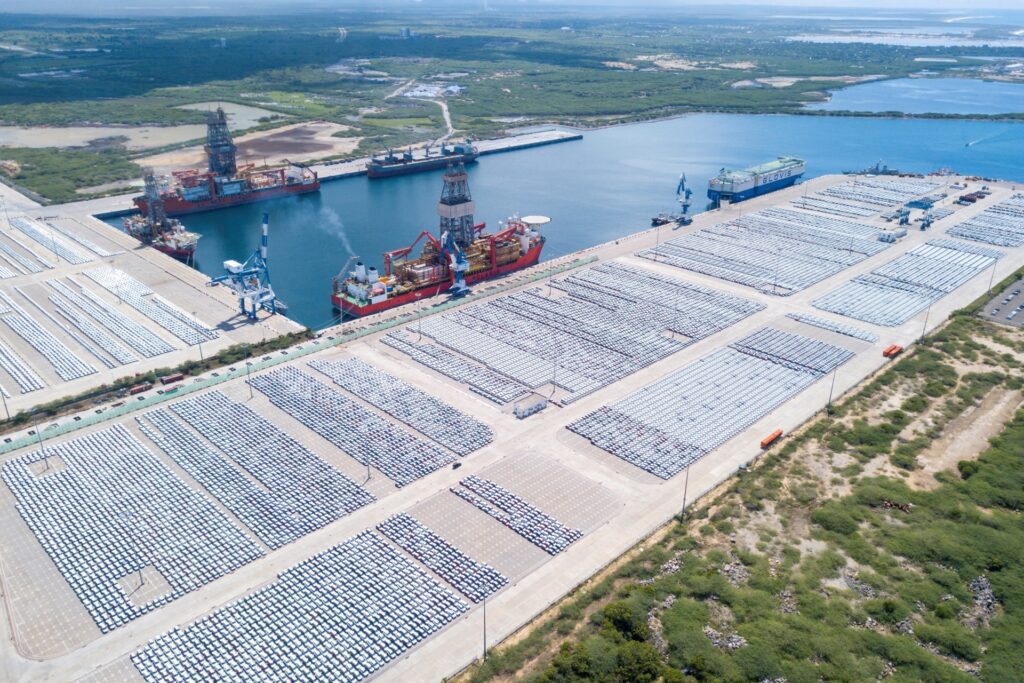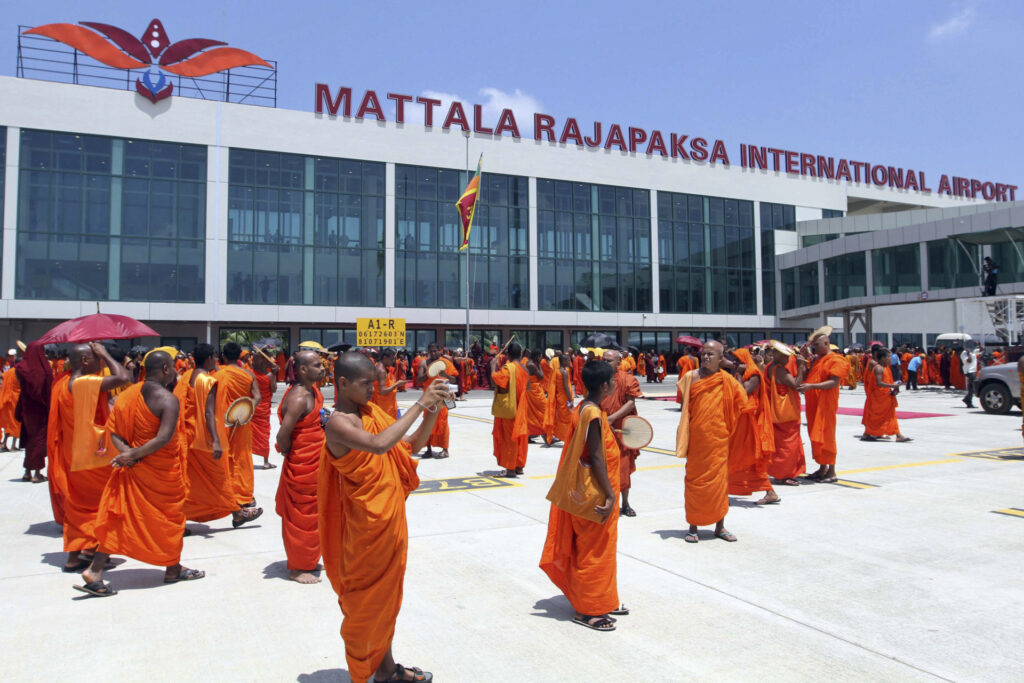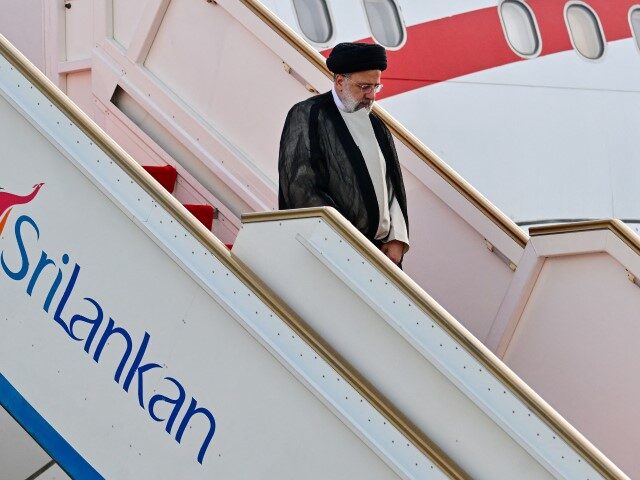Iranian President Ebrahim Raisi visited Sri Lanka on Wednesday to inaugurate a hydropower plant and irrigation project, while Russia took partial control on Friday of an airport built by China – two signs that other members of the axis of tyranny are stepping in to clean up the wreckage from China’s Belt and Road Initiative (BRI) debacles.
Sri Lanka is a prime example of a developing nation lured into ruinous debt by BRI, which tends to saddle China’s client states with loans they can never repay for infrastructure projects that prove much less profitable than promised. Sri Lanka infamously handed over control of its Hambantota Port to China in 2017 when it was unable to make its BRI loan payments.
Sri Lanka’s finances continued to crumble after China collected the port as collateral, leading to a fiscal meltdown, rolling blackouts, a fuel crisis, and food shortages.

This aerial photo taken on May 6, 2021, shows a view of Sri Lanka’s Hambantota International Port. (Liu Hongru/Xinhua via Getty)
Another notorious Chinese-funded project in Sri Lanka was the Mattala Rajapaksa International Airport (MRIA), a $209 million boondoggle that became operational in 2013 despite the low number of flights Sri Lanka needs to service.
Forbes dubbed it “the world’s emptiest international airport” in 2016, noting that only a handful of planes arrive or depart on any given day and the facility gets most of its traffic from tourists who merely want to gawk at the “stunning, fully modern airport in the middle of the jungle.”
China apparently had little trouble convincing former President Mahinda Rajapaksa that the sleepy fishing hamlets of his hometown, Hambantota, could be fused into a gleaming ultramodern wonder city in which half of the buildings would be named after his family, if he only borrowed about five billion dollars from Chinese banks to finance his vision.
China was eager to pry strategically important Sri Lanka from its longtime partnership with nearby India and turn the island into a trade hub of the New Silk Road, China’s effort to rebuild the fabled trade route of old.
Five billion dollars in loans bought Rajapaksa’s support for a while, but much of the money vanished into thin air, construction of the airport was an environmental disaster that wiped out thousands of acres of elephant habitat and disrupted bird migration routes, most of the flights announced with much fanfare at the inaugural ceremony were quickly canceled, and the facility began losing $18 million a year. Several of the few planes that tried to use the airport were grounded when migrating birds flew into their jet turbines and the military has been called out to chase away elephants and buffalo that decided to camp on the runways.

Sri Lankan Buddhist monks wait for the arrival of President Mahinda Rajapaksa at the Mattala Rajapaksa International Airport in Mattala, Sri Lanka, Monday, March 18, 2013. (Sanka Gayashan, File/AP)
Angry Sri Lankan voters bounced Rajapaksa out of office in 2015, stalling his effort to realign the island away from India and toward China. Sri Lanka defaulted on its external debt in 2022 and appealed to the International Monetary Fund (IMF) for a $2.9 billion bailout.
On Friday, a statement from the Sri Lankan cabinet said management of the controversial airport would be handed over to two private corporations, India’s Shaurya Aeronautics Ltd. and Russia’s Airports of Regions Management Company, for the next 30 years. The cabinet did not offer any further details about the deal, or exactly what the Russian and Indian companies plan to do with the airport, but the arrangement could help to satisfy the IMF’s demand that Sri Lanka privatize many of its state-owned enterprises to reduce government debt.
Meanwhile, Iran’s Raisi was in Columbo on Wednesday to cut the ribbon on the Uma Oya hydropower plant, a project launched in 2010 with Iranian funding and technical assistance. When international sanctions cut off Iranian funding, Sri Lanka made arrangements to finance the rest of the project itself. Sanctions, technical problems, and the Wuhan coronavirus pandemic combined to delay completion by almost ten years.
Raisi nevertheless attempted to portray the hydropower plant and adjacent irrigation network as a triumph of Iranian “knowledge and technology” over Western “colonialism and arrogance.”
“Our enemies did not want Iran to develop and progress … so the will and determination of the Iranian people were realized, and our enemies were disappointed,” Raisi declared.
Awkwardly upstaging his host, current Sri Lankan President Ranil Wickremesinghe, Raisi used part of his visit to rail against Israel and demand concessions to Palestinian terrorism.
“When it come [sic] to the oppressor, when it come [sic] to the usurper, the Zionist Israeli regime has been committing oppression against the people of Palestine for 75 years, they have been usurping their territory,” Raisi thundered.
“First of all we have to expel the usurpers. Secondly, we should make them pay the cost for all the damages they have created, and thirdly, we have to bring to justice the oppressor and usurper,” he ranted.
Wickremesinghe indulged Raisi’s tirades by signing five memoranda of understanding on cooperation with Iran on tourism, science, technology, the arts, and sports.

COMMENTS
Please let us know if you're having issues with commenting.